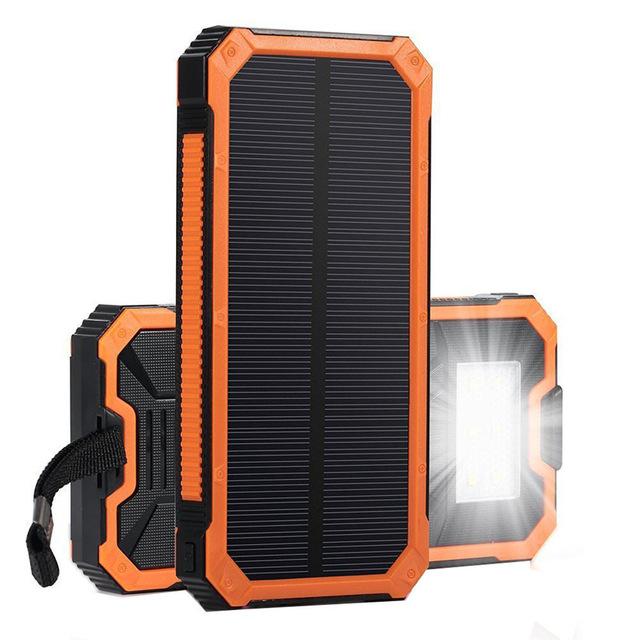

- #SOLAR POWERED BATTERY CHARGER FULL#
- #SOLAR POWERED BATTERY CHARGER PORTABLE#
- #SOLAR POWERED BATTERY CHARGER PLUS#
- #SOLAR POWERED BATTERY CHARGER SERIES#
You might need some form of trim around one or more of the outside edges, though, if they are positioned where sheets and other lines might get caught under them. This is best achieved by placing wooden spacer strips between the dabs until the mastic has completely cured, after which the spacers can be removed. To allow for some air circulation behind the panels it’s best to apply mastic adhesive in numerous large dabs.

If a PV panel gets too hot, which is quite likely if mounted directly onto a flat surface without an air gap behind, its output will drop quite noticeably. OVERHEATINGĪnother important factor that is often ignored when installing the panels is that of overheating. Older panels often didn’t have these, so the slightest partial shading caused the output of the entire panel to cease.
#SOLAR POWERED BATTERY CHARGER SERIES#
Saying that, in good quality panels each cell will be isolated from the next by a series of diodes (one-way electrical valves), so that if one cell is shaded at least it won’t drag down the other cells within the same panel. It’s no good fitting expensive, high-efficiency PVs right under the boom as they’ll perform little better than the cheaper types. It might seem obvious, but the key to an efficient system is to avoid shading wherever possible. With solid panels, the ability to adjust the angle can add significantly to output SHADING
#SOLAR POWERED BATTERY CHARGER FULL#
In this situation, many long-term cruisers devise a method of ‘dumping’ the extra energy by heating water for showers.ĭo bear in mind if you’re planning to live aboard full time, then it’ll be a whole different story on cloudy days and during the winter, when inverter use might need to be knocked on the head entirely. In some cases, when you’re cruising in warm climates such as the Med, you might end up with excess charge from your solar panels. The trick is to monitor the batteries’ state of charge (SOC) at all times and vary your use of the inverter to suit.įor example, you might want to cook supper mid-afternoon, when solar is in abundance, and then reheat it in the evening when you want to eat it. Get your solar charging right and you may never need to hook up to shore power Typical daily inverter loads for a cruising yacht off grid might be: Of course, to do this you’ll most likely need to increase your battery capacity to around 400-500Ah for maximum flexibility (you’ll need to store as much as possible during daylight hours), a typical figure for a 40-50ft offshore cruising yacht these days.
#SOLAR POWERED BATTERY CHARGER PLUS#
So that’s enough for your 100Ah general DC consumption plus another 150Ah of AC consumption via the inverter. The 1,200W of fixed position solar array could produce around 360Ah on a sunny summer’s day (zero shading) or more likely 250Ah on the average UK summer’s day.
#SOLAR POWERED BATTERY CHARGER PORTABLE#
In practical terms, a modern 40ft monohull would have the space for around 1,200W of PV panels (cockpit arch, sprayhood top, deck), maybe 1,500W with the addition of a few portable panels for use at anchor.

Of course, if you like to run a lot of AC devices off-grid such as hair dryers, microwaves, toasters and the like, then you’re going to need a DC/ AC inverter, which will take you to another level in power consumption terms.īut even then, with careful planning, solar could provide a large portion of the power you need before resorting to engine charging or a generator.



 0 kommentar(er)
0 kommentar(er)
